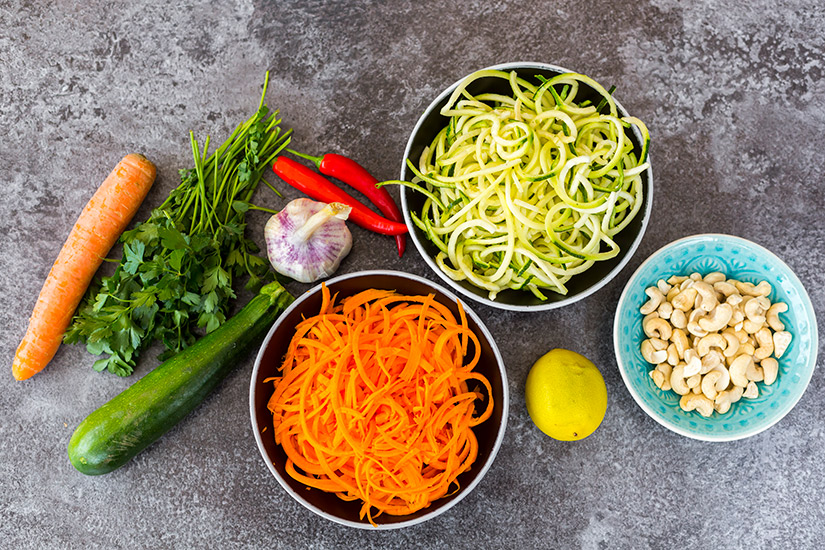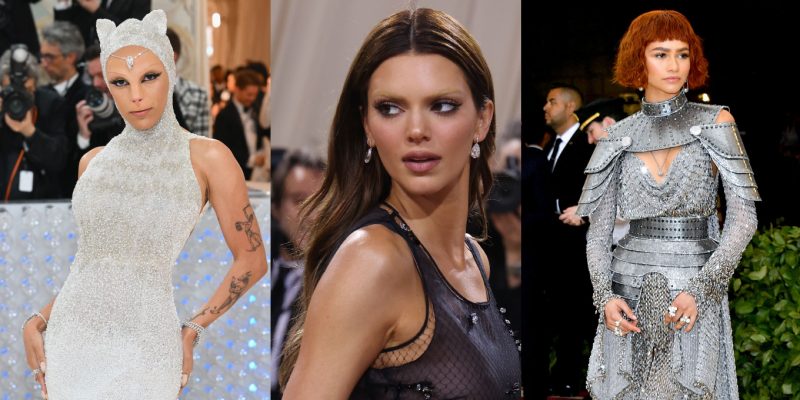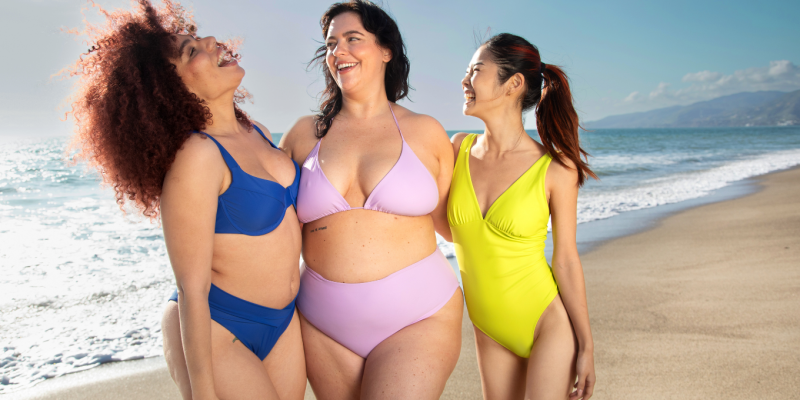Health & Fitness
The deal with Whole30's seemingly arbitrary rules
There’s a good reason why you can have potatoes but not chickpeas.
by : Carli Whitwell- Jan 15th, 2018

If you haven’t heard of Whole30, we recommend grabbing your Commodore 64, cuing up your dial-up and logging onto this thing called the Internet. The reset-your-bod meal plan program is pretty much on everyone’s post-holiday-recovery-mode to-do list and Instagram feed right now, including four members of the ELLE Canada team. (We’re currently on day 22 and holding strong.)
Here’s the Coles Notes version: you give up dairy, grains, legumes, any added sugar (and we mean in everything , like ketchup or chicken broth or alcohol, etc.) for a month and then slowly introduce them back into your meals to see if and how they affect your system.
But as someone who writes about health for a living, and therefore reads a new theory about what’s good/terrible for us every day, I was curious why certain foods were allowed and others strict no-nos. Happily, Melissa Hartwig, a certified sports nutritionist, co-founder of the Whole 30 program and possibly the most enthusiastic/friendliest person on the planet, was in Toronto recently and explained all.
A post shared by Melissa Hartwig (@melissa_hartwig) on
What’s the premise of the Whole30? We focus on four areas: your cravings and emotional relationships with food, your metabolism and blood-sugar regulation, your digestive system, and your immune system. So if those foods are problematic in one of those areas, then those foods are making you less healthy. It’s very important to note that this is just a 30-day reset. We’re not saying these foods are bad. We’re just saying that, according to the scientific literature and our clinical experience, these foods are commonly problematic to varying degrees across a broad range of people. And you won’t know how and if they’re problematic for you until you pull them out [of your diet], see what happens, reintroduce them and compare your experiences.
I’m a hummus fiend, so when I heard no legumes (chick peas, black beans, soy beans, kidney beans, peanuts, peas, etc.) I was devastated. How do they affect the body? Soy tends to be typically problematic. It’s one of the top allergenic foods in the world. It can potentially create estrogen imbalance issues. In the right context it may be helpful, but there’s no way to dose it because you don’t know how much you’re getting or what the phytoestrogen is doing to your body. If you’re talking about peanuts, also a legume, those are one of the very few foods that have been shown to directly impact the gut barrier and interact with the immune system, which could be contributing to those peanut allergies we see. Other legumes, they contain FODMAPs [molecules that are poorly absorbed by the body] that can bring about digestive distress to people who are sensitive. So, maybe you reintroduce black beans and notice no ill effects, that’s awesome. But it’s all about that figuring what works for you and the Whole30 is the protocol to help you do that.
A post shared by The Official Whole30 Program (@whole30) on
What about fruit? So many people say bananas or grapes are so sugary. Remember this isn’t about eliminating foods that are high-carb or eliminating foods that have a high-glycemic index. We don’t want to demonize any one food group. We aren’t reductionists. Fruit contains vitamins and phytonutrients and fibre and water. Its full, unprocessed form can be a good addition to a normal, healthy diet. Is there way of using fruit in an unhealthy way during your Whole30? Yes. Do we caution against that? Yes. For example, using it as a dessert to satisfying sugar cravings. Or making everything with dates because that’s the only way to make it sweet. That’s against the spirit and intention of the program. But if you want to chop up banana and eat it in the middle of your fruit salad with your omelette, of course it’s fine. The same thing with potatoes. Should everyone be eating two or three potatoes a day? No. But I’m super active and I really need that extra energy in my day. So it’s contextual. Potatoes, plantain, butternut squash, acorn squash, all the winter squashes are great sources of carbs.
What do you eat in a day? My breakfast is typically three eggs and a bunch of whatever veggies I have leftover scrambled in. Maybe I’ll cut up a chicken sausage. I’m not a huge fruit person. But sometimes I’ll do a side of cranberry sauce. I love breakfast salads so often I’ll do a garden salad and throw a couple fried eggs on top. It’s very popular in Scandinavian countries. The last breakfast salad I made was romaine lettuce, red bell pepper, either roasted sweet potatoes or butternut squash (whatever I happen to have leftover) some chopped walnuts, two fried eggs, and a drizzle of balsamic. It’s really good. Lunch tends to be either dinner leftovers or I’ll make deli turkey wraps pretty often wrapped in collard greens or lettuce. I do protein salads a lot – so chicken salad, tuna salad, salmon salad. And usually with a side of veggies. And dinner is something from Whole30 fast meal. Dinner is the one meal I cook.
How often should you do the Whole30? Most people come back to Whole30 multiple times. When you’re trying to change your habits and a lifetime of unhealthy relationships with food, you can’t expect one 30-day reset to magically transform you forever. So coming back to the program is a really good reset, a good way to reinforce healthy habits, reconnect with the community, gain some skills, and then get out there with your food freedom for a longer period of time. But we’re not saying you should eat like this forever. Use this protocol to figure out what works for you and take what you learned and build a perfect diet for you. I haven’t done a Whole30 in a couple years because I don’t need it. I’m perfectly in balance in my food freedom. I never feel out of control. I feel like I’m always looking and feeling as good as I want to look and feel, and like that changes day to day, but I feel like I’ve got it dialled in at this point.
A post shared by The Official Whole30 Program (@whole30) on
How do we break that idea of food as a reward? On Whole30 we don’t allow you to recreate baked goods and junk food with compliant ingredients. And the reason we do that is, say when you’re on day three of the Whole30 you had a fight with your boyfriend. Usually you would come home and throw down a pint of Häagen–Dazs. And instead you say, “well I found this banana ice cream with coconut milk and dates that I can make instead.” You can’t do that [on Whole30]. Ask yourself, “what do I need? I need to connect with someone. I need to go for a walk. I need to talk to my mom.” You find other ways to satisfy that emotional need because it’s never about the cookie. It’s almost always about looking for some connection.
Personally, I always want something sweet after dinner. If you look at research with smokers, an average craving is like 3-5 minutes. It’s so short-lived. But in the moment, because food, pleasure, habit and reward receptors, the pathways in our brain, are so closely intertwined, and scientists have been feeding on that, it feels necessary. I like the idea of replacing the routine with a different routine that gives you the same reward. So, after dinner sit and relax with a cup of herbal tea. Sit down with a good book. Pull out a board game. Create a routine after dinner to break that association of “my meal’s not complete until I have something sweet to eat.”
Newsletter
Join our mailing list for the latest and biggest in fashion trends, beauty, culture and celebrity.
Read Next

Beauty
The Best Met Gala Beauty Looks Of All Time
From Taylor Swift's 'Bleachella' era to Rihanna's iconic 2011 braids, meet the best beauty moments in Met Gala history.
by : Katie Withington- Apr 26th, 2024

Culture
Benny Blanco Says He Fell in Love With Selena Gomez Without ‘Even Noticing’ It
Allow Benny Blanco to tell the straight-from-a-rom-com story of how he realized his feelings for his girlfriend and longtime friend.
by : Alyssa Bailey- Apr 26th, 2024

Culture
ELLE Escapes: Savannah
Where to go, stay, eat and drink in “the Hostess City of the South.”
by : ELLE- Apr 15th, 2024


